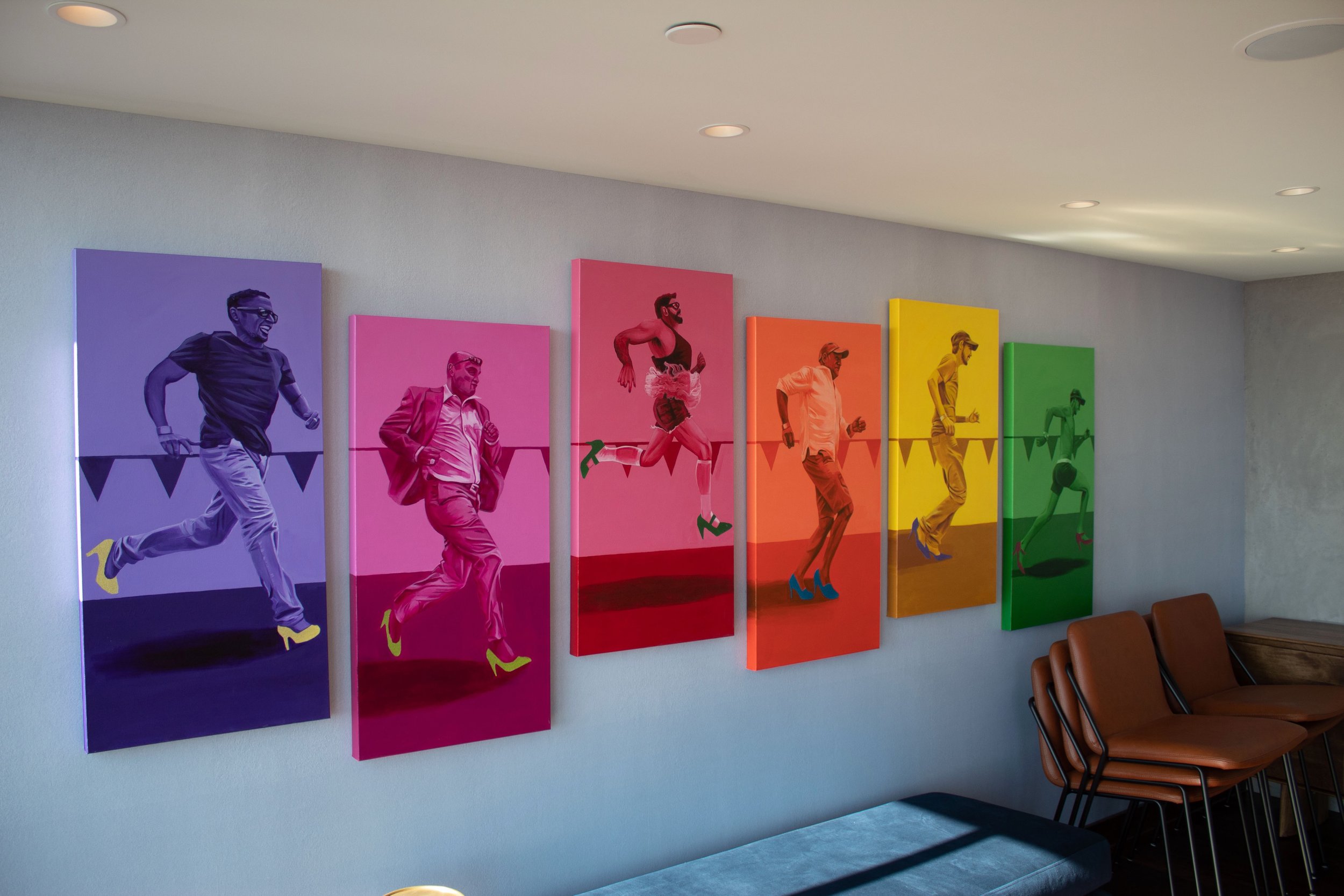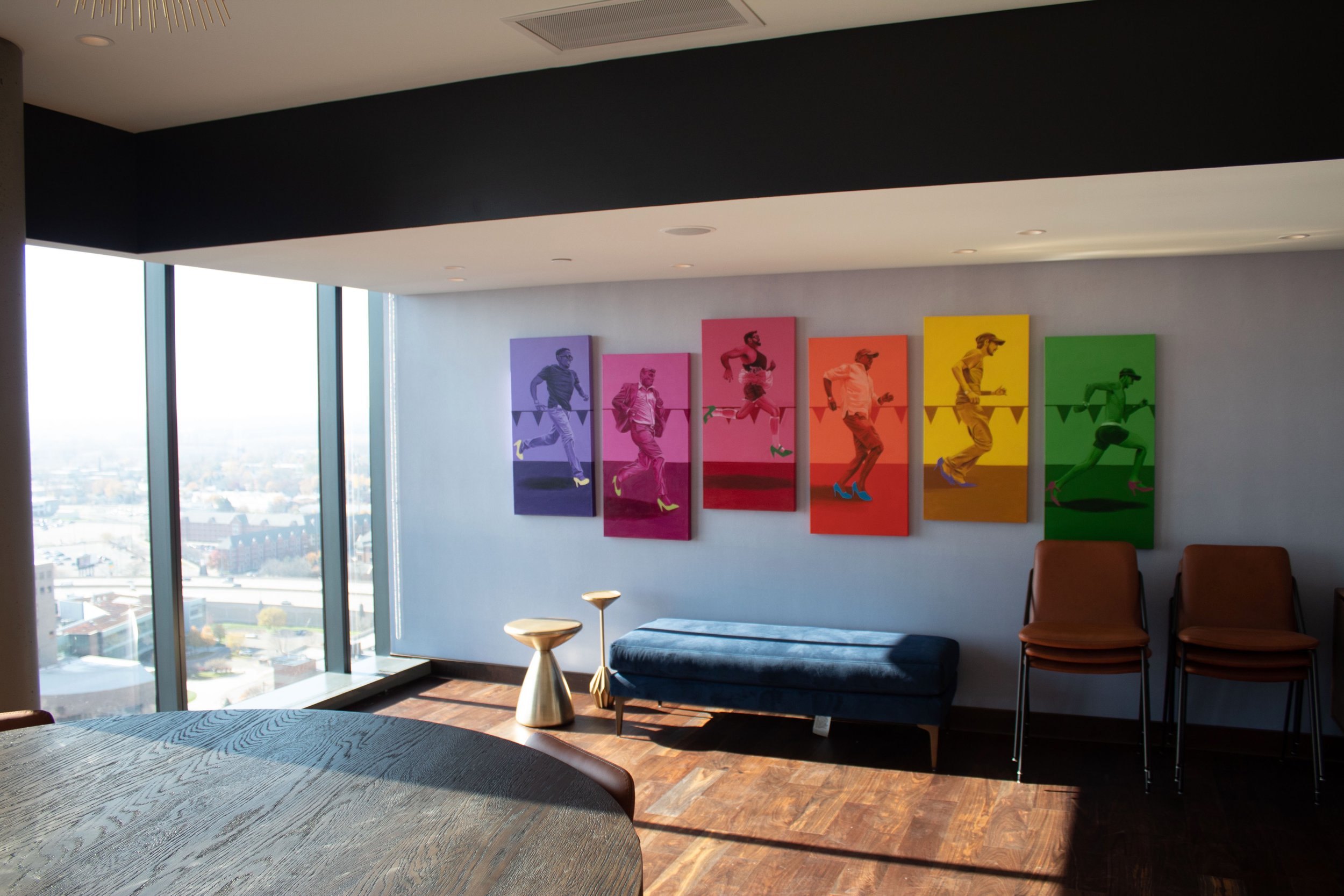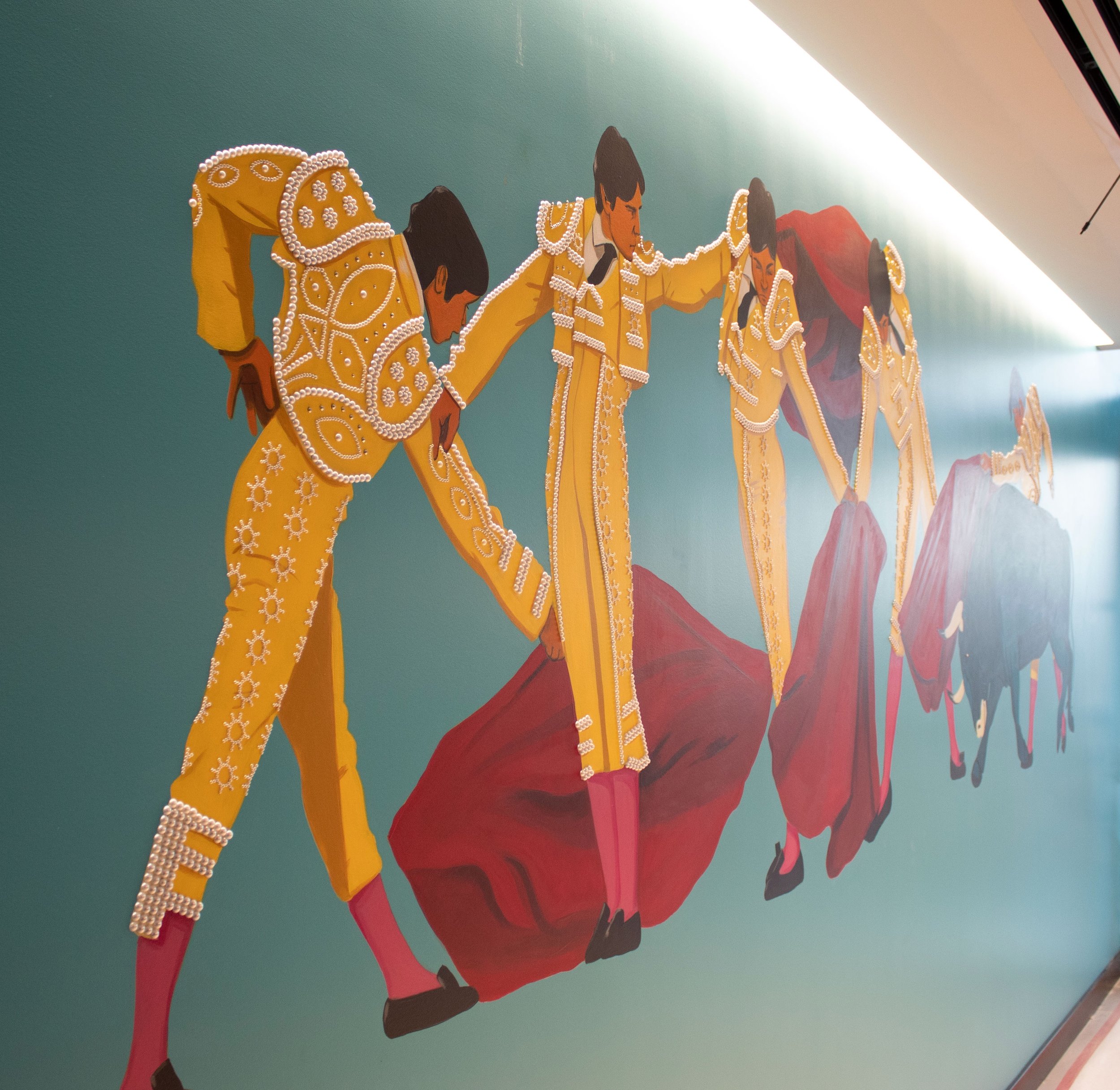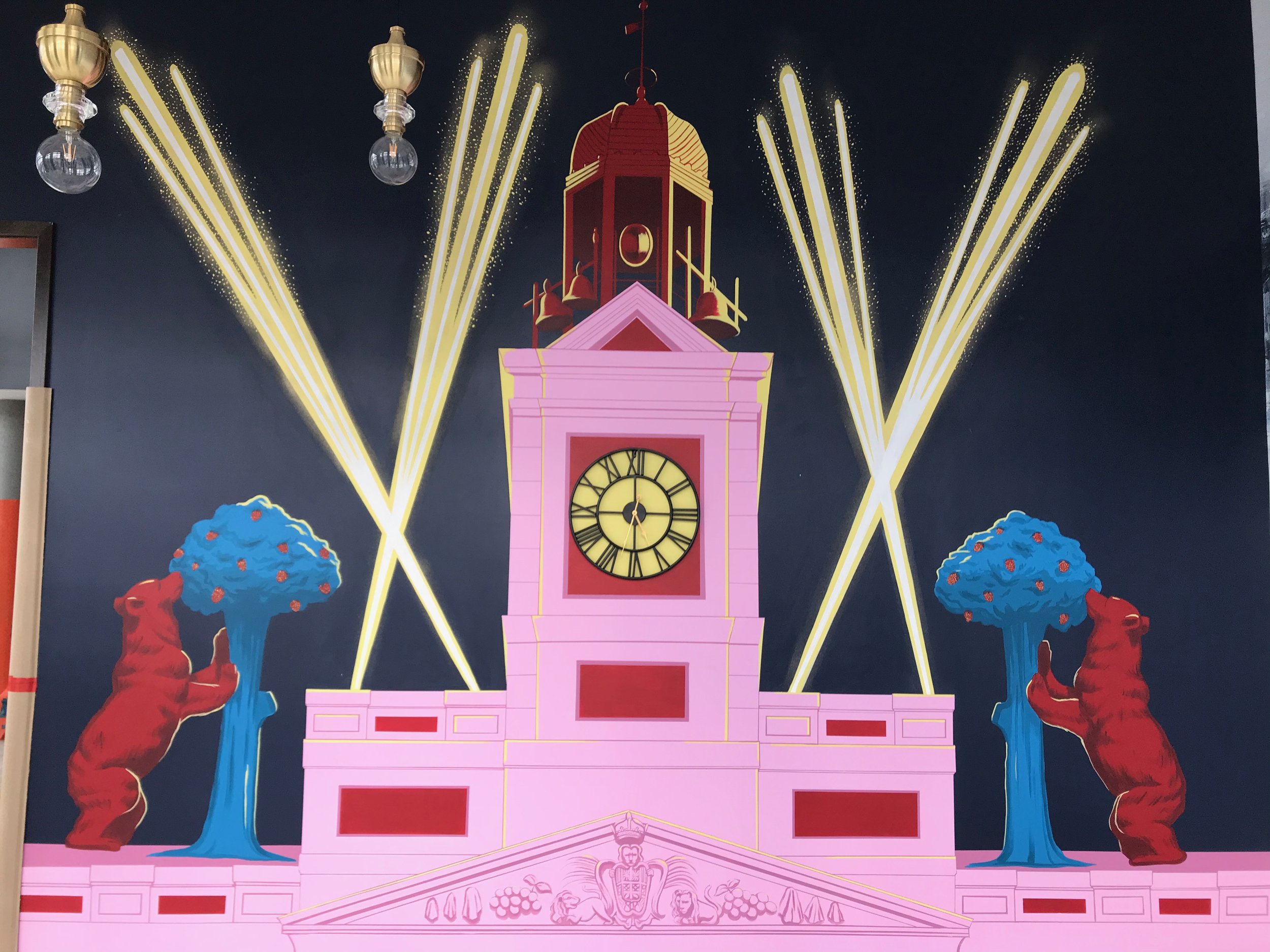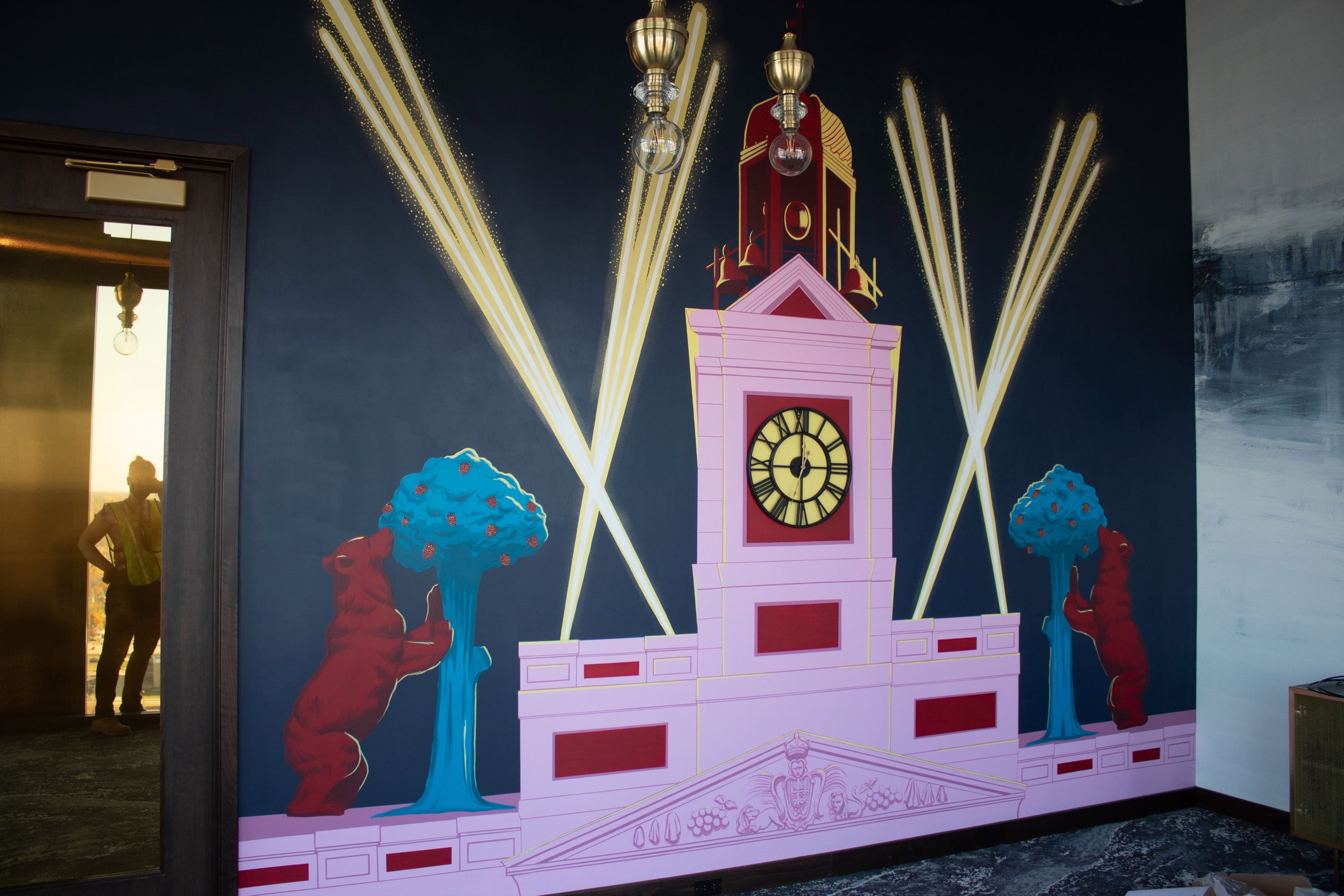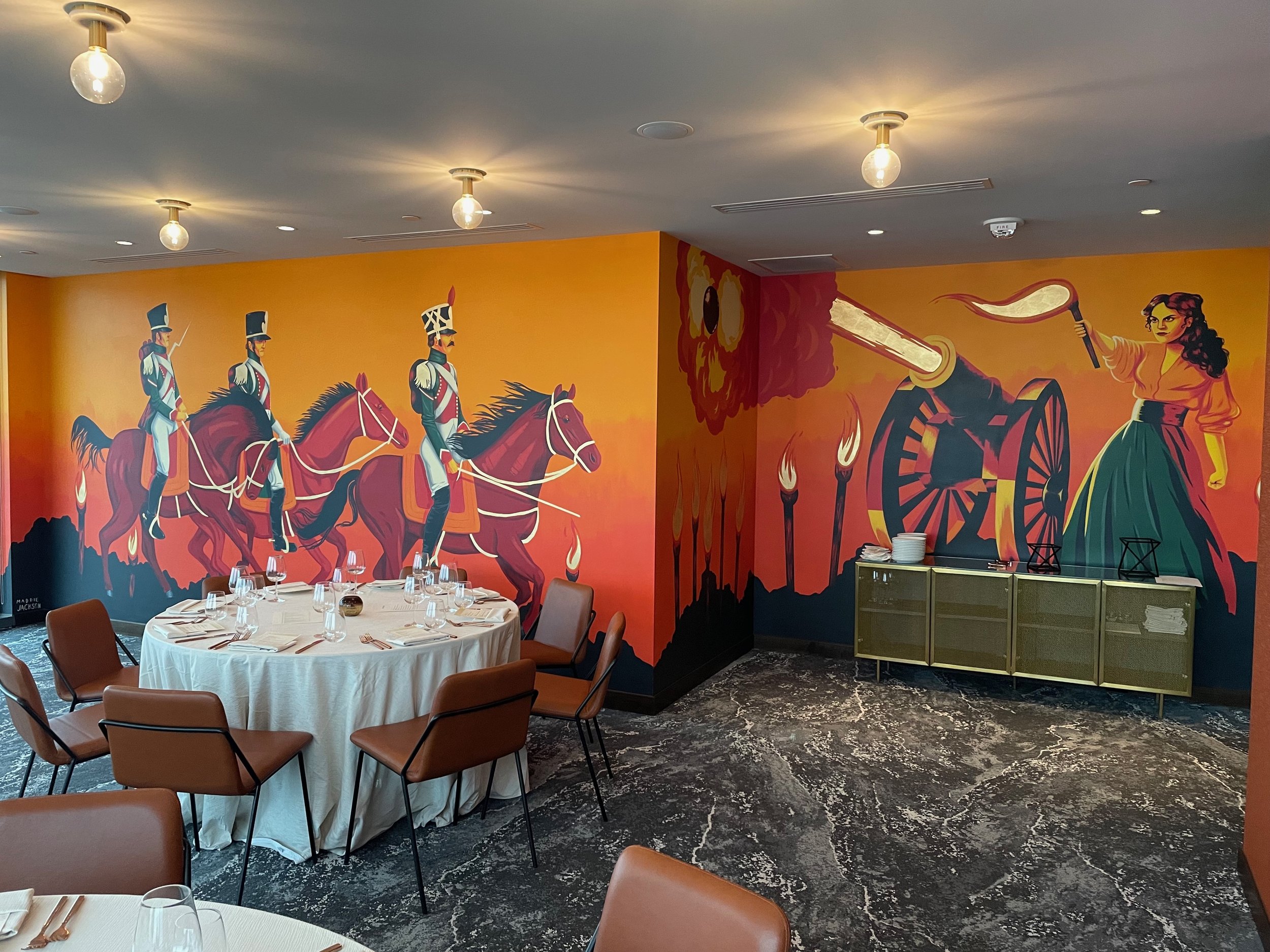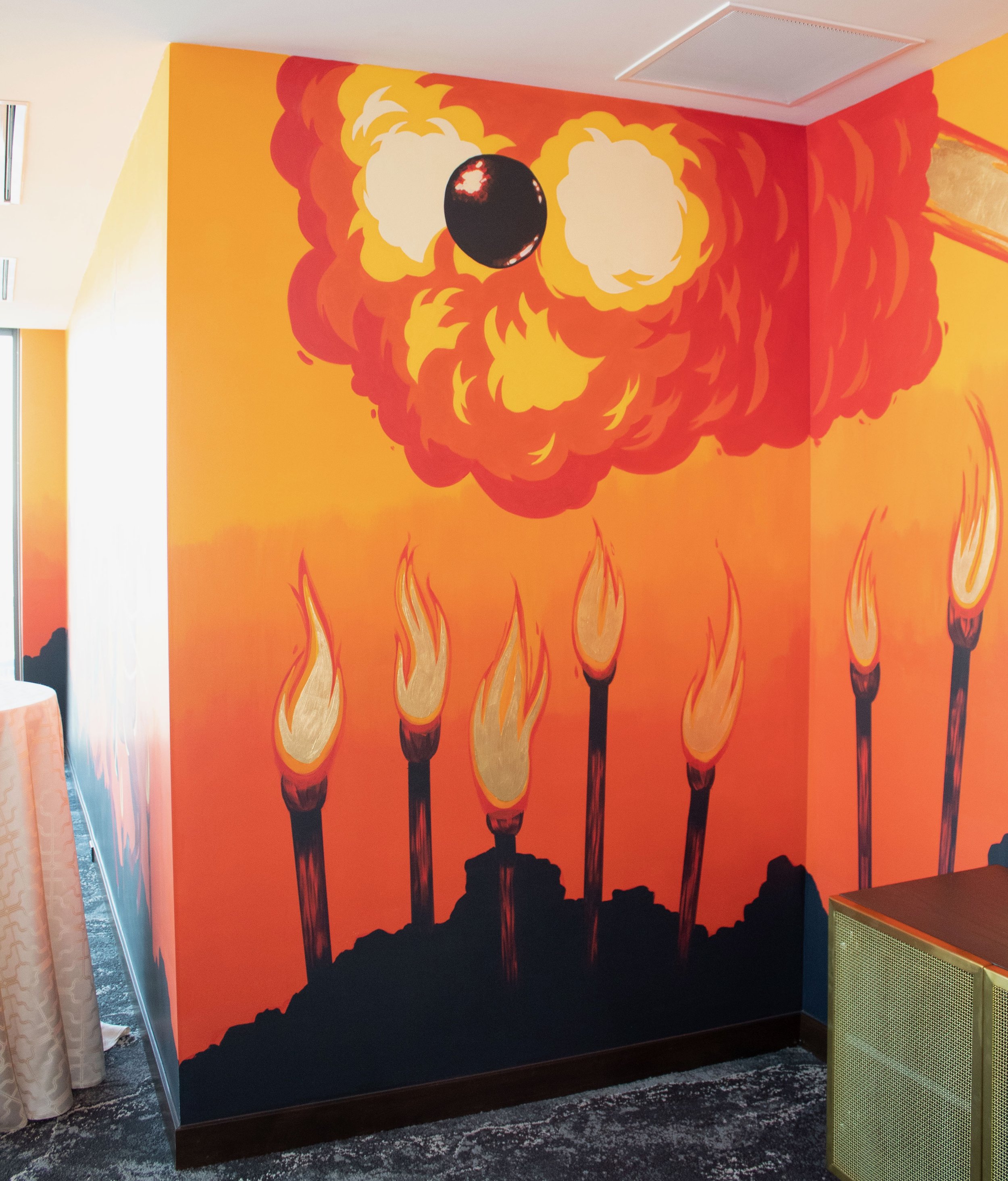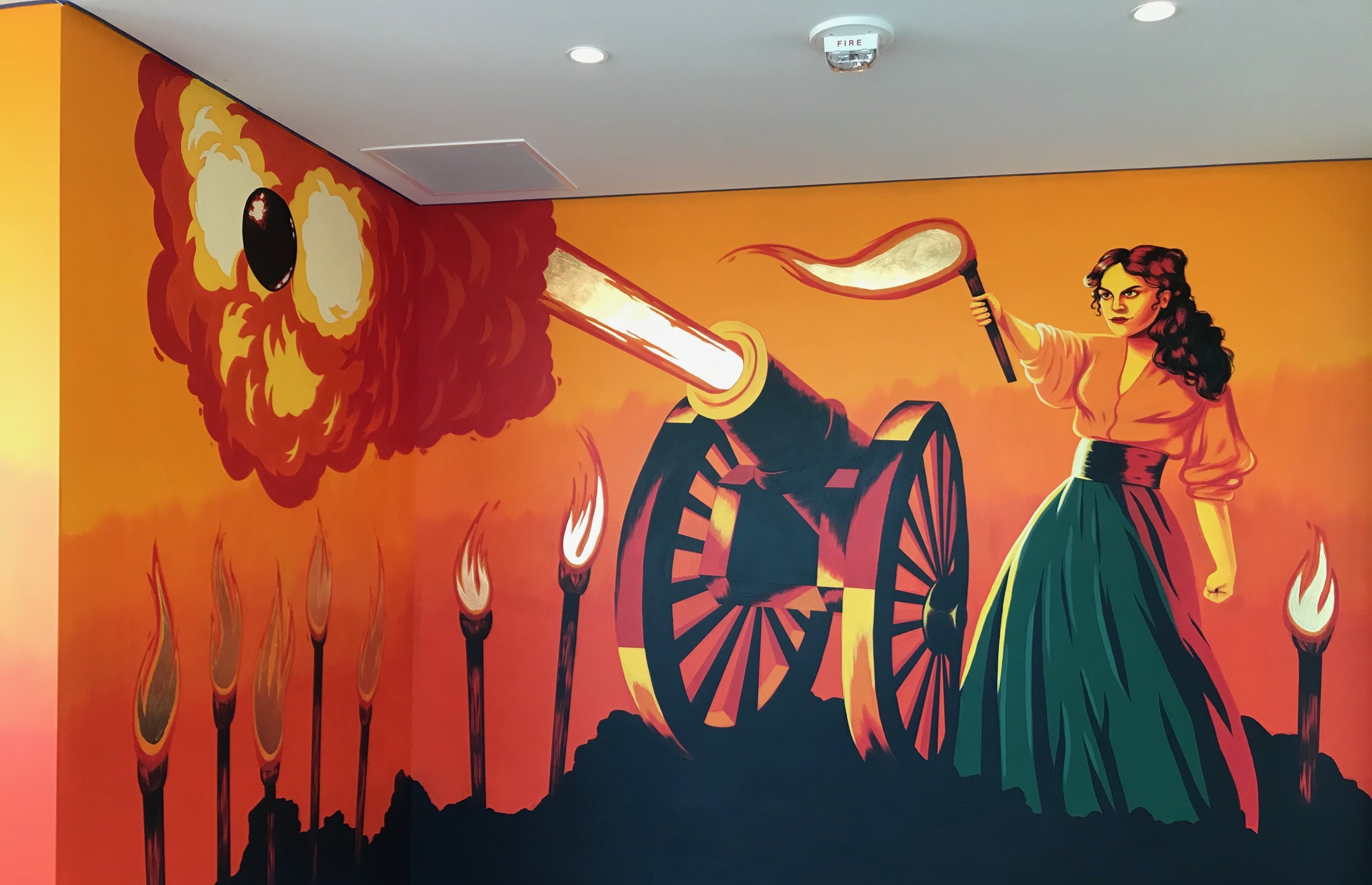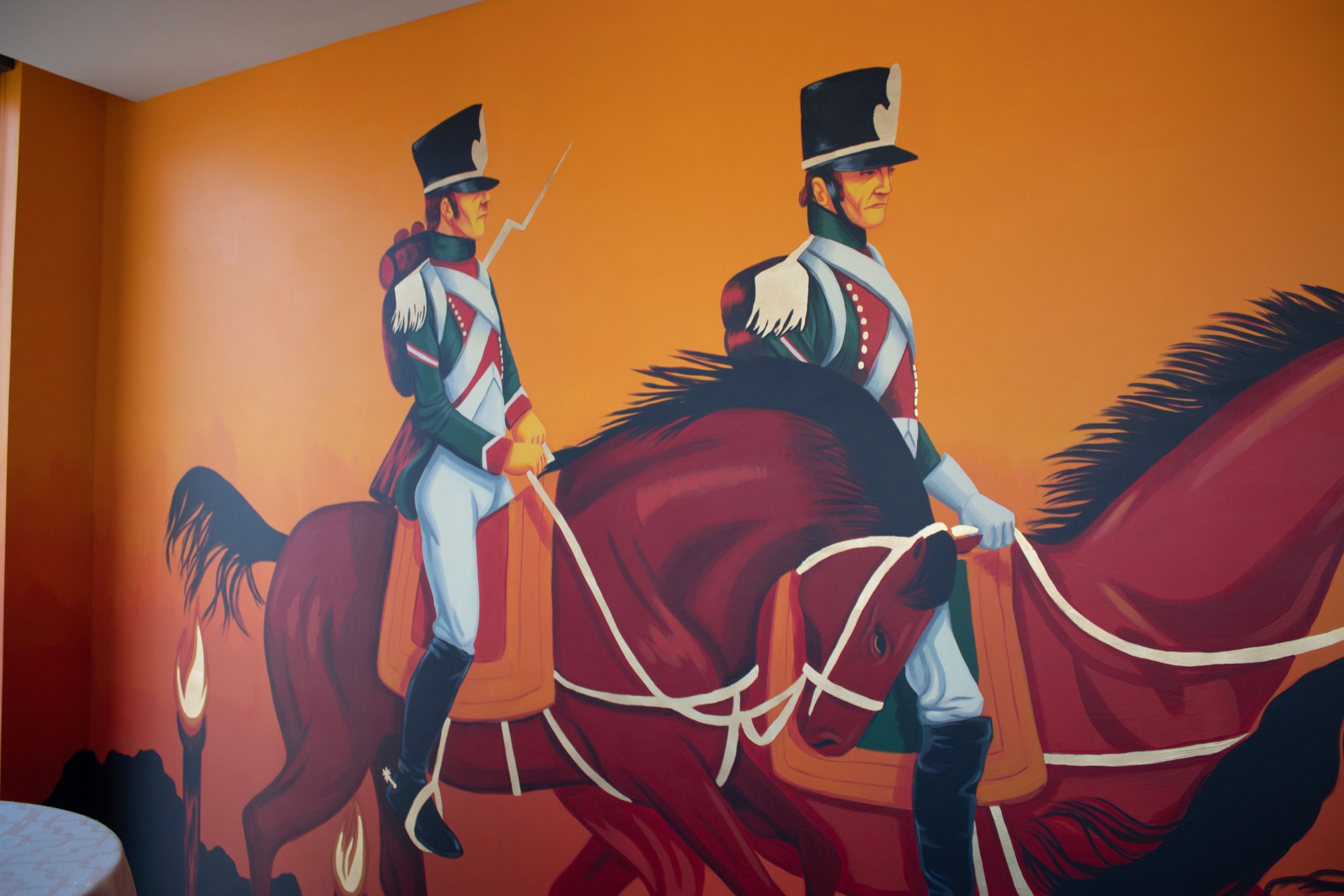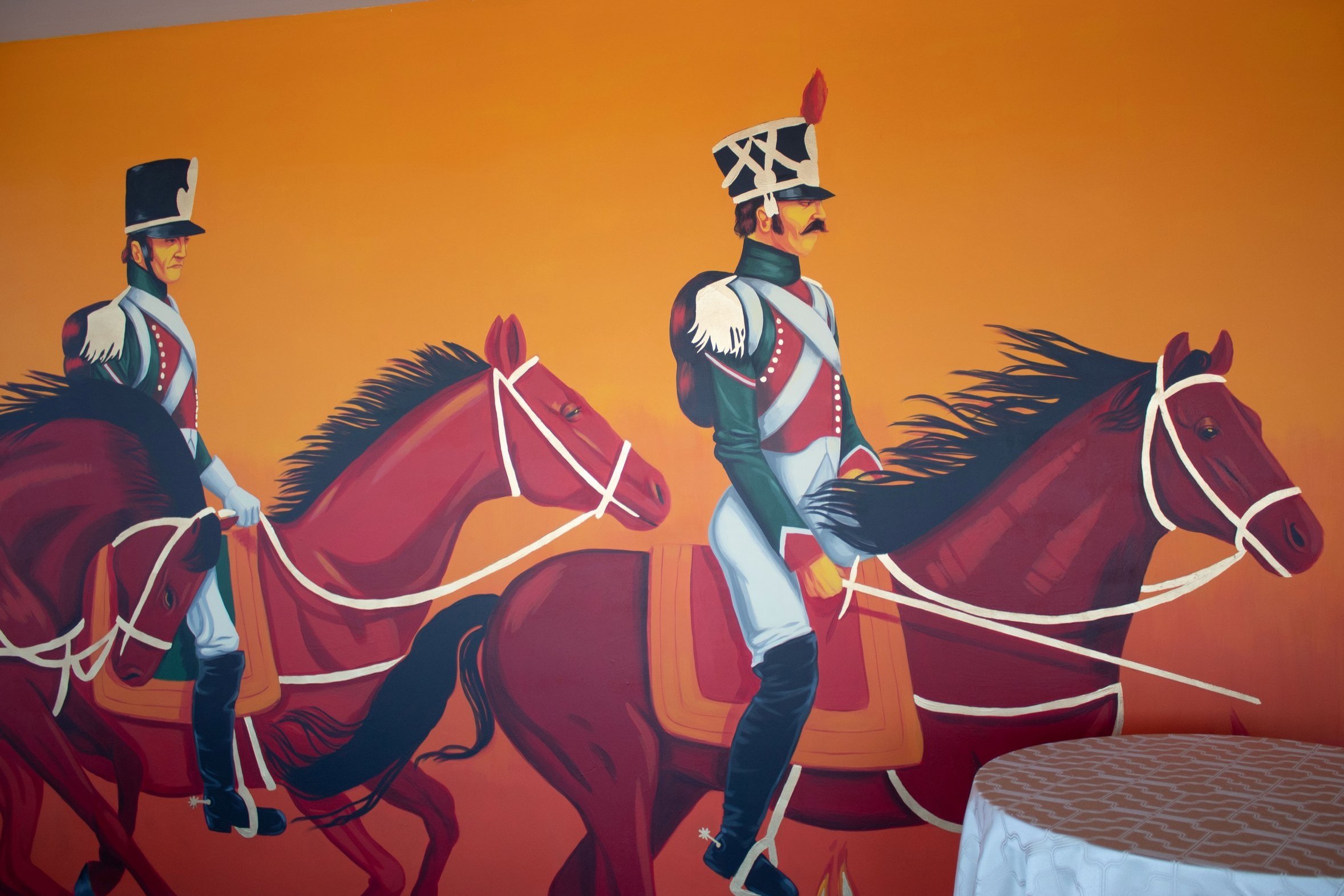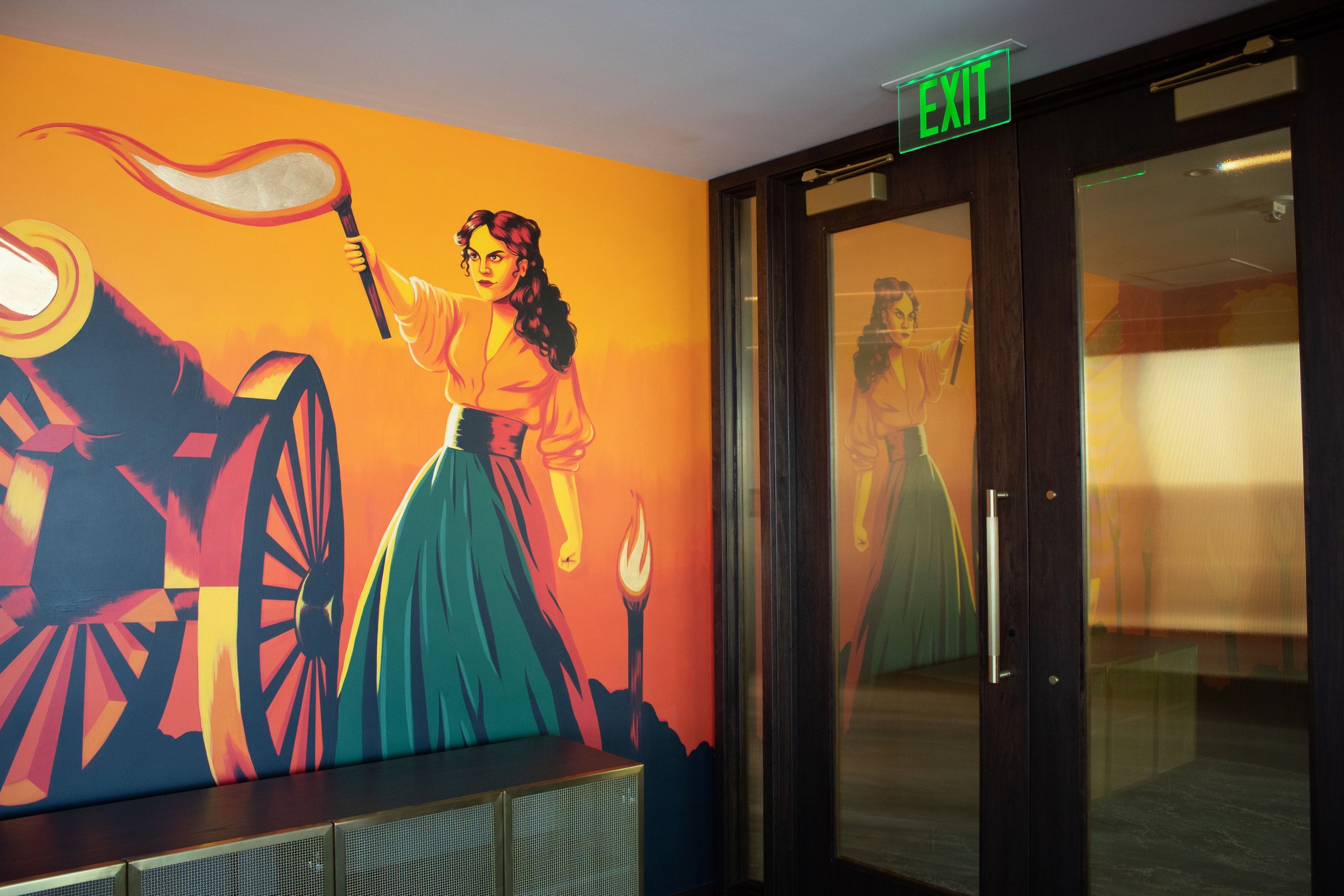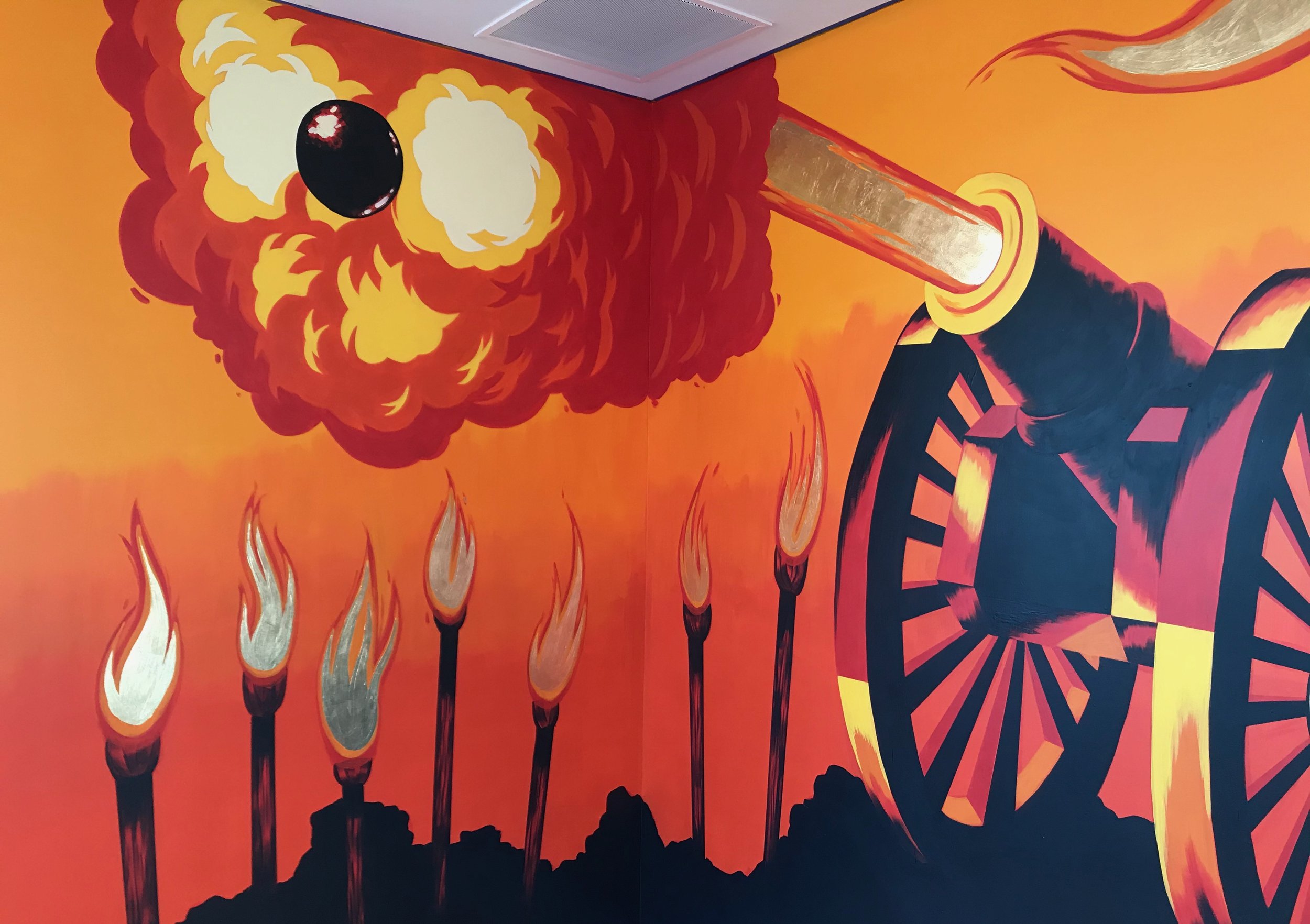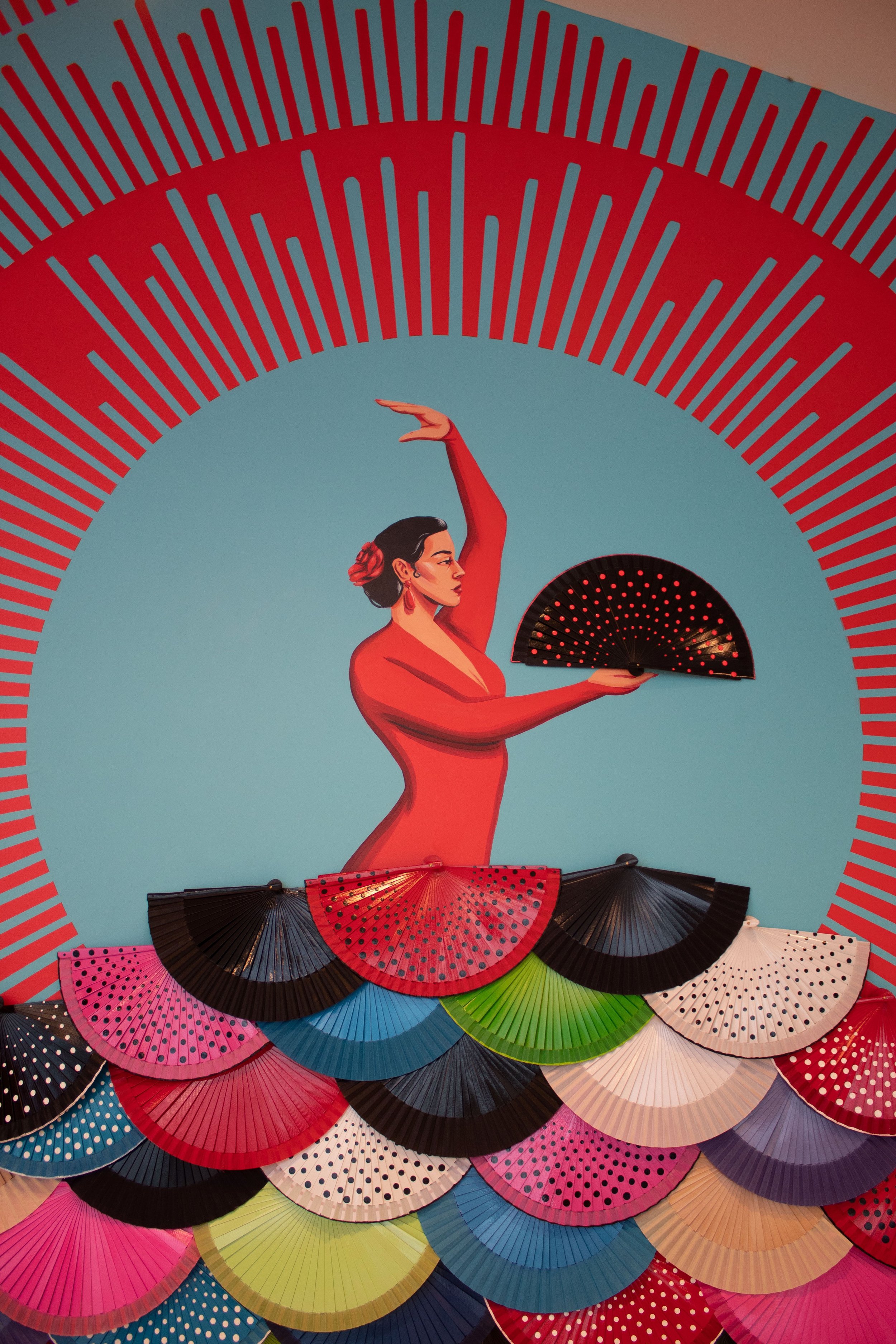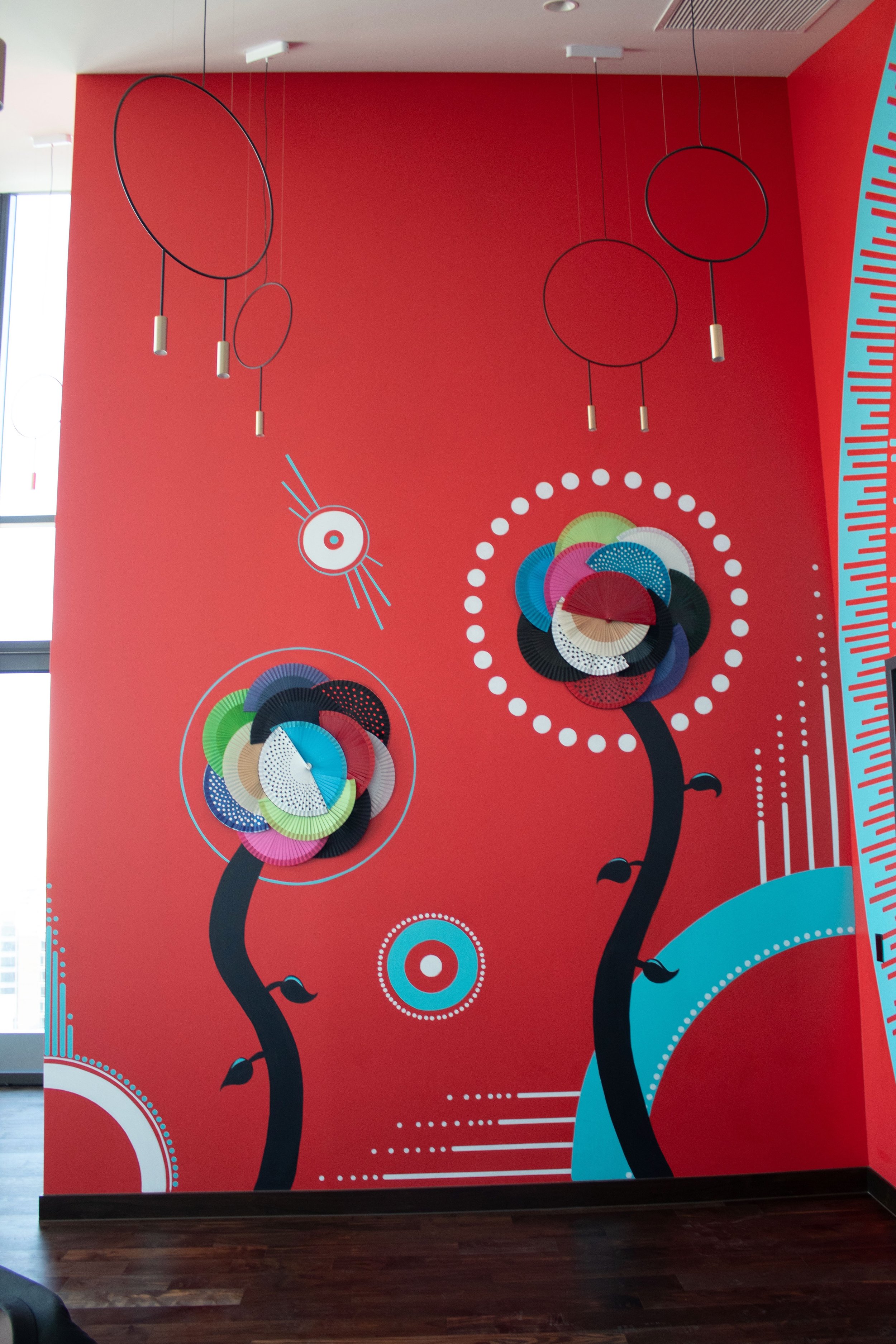MDRD Murals
In 2020, I partnered with the folks at AHC Hospitality to create 5 unique installations for their new Spanish themed restaurant on the 27th floor of the Amway Grand Plaza hotel - MDRD (pronounced “Madrid”). Each installation would be inspired by the culture of a unique district within Madrid, Spain. I spent 5 weeks living in a room at the Amway Grand Plaza Hotel and bringing these pieces to life.
Chueca
This collection of portraits depicts contestants competing in one of Madrid's most high-profile Pride events, the world-renowned annual High Heel Race. The participants, largely composed of men, must don heels measuring at least 4 inches to qualify for the event. Contestants from all walks of life race down the cobbled streets of Chueca, the epicenter of gay Madrid, competing to bring home a cash prize. Despite backlash from opposing groups and calls for the race to be moved outside the city, the High Heel Race stands strong as a yearly embodiment of the tolerance and iov found in the Chueca neighborhood.
Salamanca
Known by some as a medieval blood sport, and others as a noble and artistic Spanish tradition, bullfighting remains a staple of the culture of Salamanca, Spain. The controversial practice has remained a part of Spanish culture, and inspired some of the world's greatest artists and writers throughout history. In Death in the Afternoon, Ernest Hemingway states, "Bullfighting is the only art in which the artist is in danger of death and in which the degree of brilliance in the performance is left to the fighter's honor." This piece explores the poetic components of bullfighting, highlighting the dynamic and precise movements of the fighter and bull moving as one in the moments before the fight inevitably turns brutal.
This piece features hundreds of hand-applied acrylic pearls and gemstones, which sparkle and glow quite magically under the lights at MDRD.
Malasaña
This piece is inspired by the historical heroics of Agustina de Aragón. Often referred to as the "Joan of Arc of Spain", Agustina de Aragón was a renowned heroine of the Peninsular War. She was the wife of a soldier who joined the resistance when French troops unexpectedly invaded Spain in 1808. She was captured and suffered the loss of her son during the invasion but escaped, making her way to Saragossa, a fortified city, determined to defend itself from French forces against all odds. Agustina inspired many in the Spanish resistance by manning guns and cannons in a fiery defense against the invaders. The city ultimately lost the battle after three months, but Agustina escaped once more, going on to become the only female officer in the Peninsular army. This mural pays tribute to the bold and fearless defense put forth by Agustina and the spirit of action she inspired in those around her.
This installation features gold leaf applied after painting the mural.
Flamenco
This piece is inspired in part by the El Rastro fleamarket of Madrid, a vibrant open-air marketplace where visitors can find goods of all kinds, curious objects, and antique shops. Additionally, this display utilizes a colorful array of fans that one might find at the El Rastro fleamarket to depict the elegant gown of a flamenco dancer. Flamenco is a complex interplay of several different artistic elements: singing (cante), guitar playing (toque), dance (baile), polyrhythmic hand-clapping (palmas), and finger snapping (pitos). The art form began in the ostracized Roma communities of southern Spain but was also shaped by musicians and performers in the Caribbean, Latin America, and Europe. Flamenco has a complicated relationship with Spanish national identity, being dismissed as a vulgar spectacle by Spanish elites in the nineteenth and twentieth centuries who resented it becoming synonymous with Spanish culture. However, the dramatic dance of passion, drama, and fluidity remains one of Spain's great cultural hallmarks.
For this installation, I built the hanging flowers from fans affixed to large plywood circles. I hand installed each fan of the flamenco dress to the wall as well.
